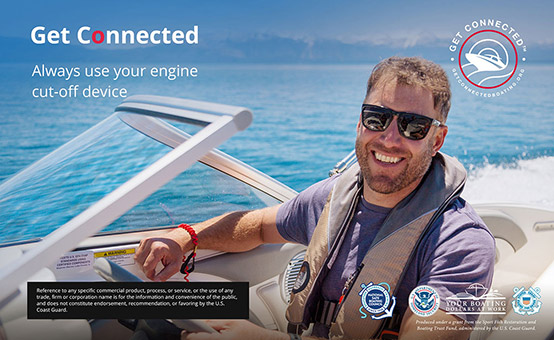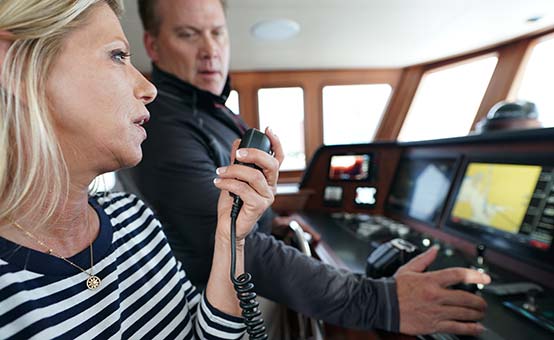By America's Boating Club
BOATING SAFETY | May 2, 2020
[Begin Video Transcript 00:00:16]
In this video, you'll learn how to respond when a person falls off your boat by safely returning your boat to the person in the water within 10 feet, in less than a minute, avoiding risky or sudden maneuvers. You'll learn that a successful retrieval begins with a passenger and crew briefing of their responsibilities before leaving the dock. You'll also learn how to bring the person in the water back on board without further injury to him or her.
What problems are you trying to avoid?
So, how do you do it right?
A successful overboard recovery starts with a briefing of your passengers and crew before departure, discussing how to react to a man overboard incident and individual responsibilities.
Recovery of a person in the water is a four-stage process:
The first person observing the incident has the critical role of spotter and should immediately shout loudly "MAN OVERBOARD!" and keep pointing at the person in the water until directed otherwise by the boat operator. The only visible part of a person overboard is his or her head above water and that quickly looks smaller and smaller to the eye as distance increases. Do not lose sight of the person overboard.
Other crew members should immediately throw floatation aids to the person overboard if they are sure the aids will reach the person. Otherwise, wait until the boat returns. Having a line attached to the throwable makes it more useful for retrieving the person.
The helmsman must maintain safe operation of the boat and keep a forward lookout. In calm or moderate seas, he or she should shout "HOLD ON" and reduce speed, drop off plane, and shift the throttle to neutral, minimizing the distance to the person in the water. In heavy sea conditions, avoid pitchpoling or rolling, adjusting speed and direction.
If there is sufficient crew, assign one individual to maintain a lookout for other boats and objects in the water during the entire maneuver. Otherwise, this remains the responsibility of the helmsman.
Have your spotter who is pointing at the person overboard move forward into the sight of the helmsman to aid in the final approach.
Make your final approach to the person in the water as a controlled turn of the boat at the slowest speed using intermittent throttle. If possible, heading into the wind or current for maximum control. This is the most critical step in a quick recovery.
Position the side of your boat within 8 to 10 feet of the person overboard on the upwind side (between the person and the wind). This will help the boat drift toward him or her.
Stop your boat before reaching the person but close enough to reach him or her using a boat pole or by throwing a line a short distance. If an adjustment is needed to get closer, when the person is amidship, turn the helm away from the person in order to bring the stern closer.
When you have positioned your boat alongside the active person overboard throw a floatation device attached to a line, or just a line, or reach him or her with a boat pole. In calm to moderate seas, turn off your engine once physical contact is made with the person. With the engine off, put it in gear to prevent prop freewheeling. In heavy sea conditions, leave your engine on to prevent pitchpoling, rolling, or capsizing.
Pull the person overboard alongside and use a Lifesling or looped line attached to the boat to create a secure hold and ensure you will not lose control of the person should he or she weaken.
Use a swim platform, ladder, or other boarding aid to help the active person climb back into the boat. Assist the person in climbing onboard and monitor the health of the recovered individual. Treat for hypothermia, if necessary, and call for medical assistance as warranted. Retrieve the throwable floatation aid.
If the person overboard is unconscious, check for injury. Only bring the person on board if this can be done safely. Otherwise, secure the person to the side of the boat in a safe position and call for help.
And again, maintain a proper lookout throughout the entire maneuver, with an eye on the person overboard.
With practice, should a person fall overboard, returning your boat to the person in the water, within 10 feet and in less than a minute, will become your natural response. You'll also know what you need to do to bring the person back on board safely.
[End Video Transcript 00:05:38]
MORE FROM
SAFE PASSAGE

BOATING SAFETY | Aug 24, 2019
Engine Cut-Off Devices Save Lives. Get Connected!

BOATING SAFETY | Aug 25, 2019
When to Call a Mayday and How to Do It Properly